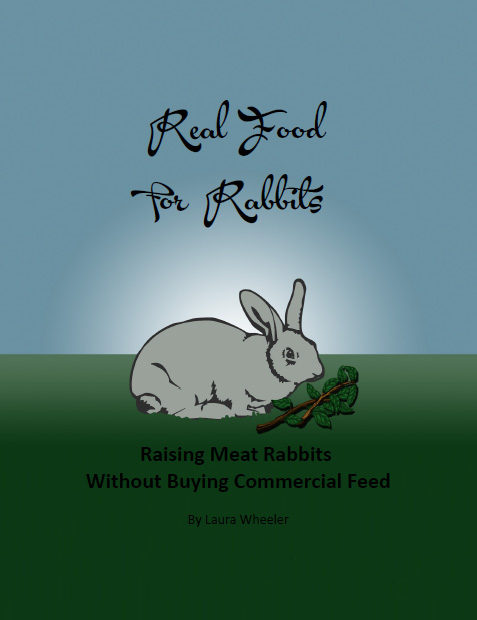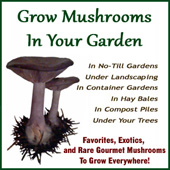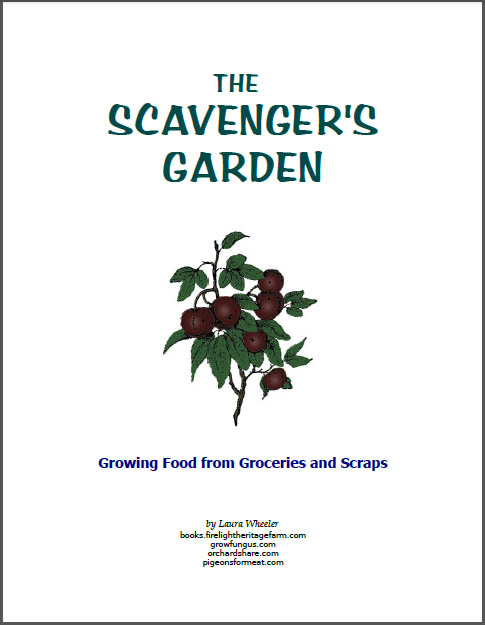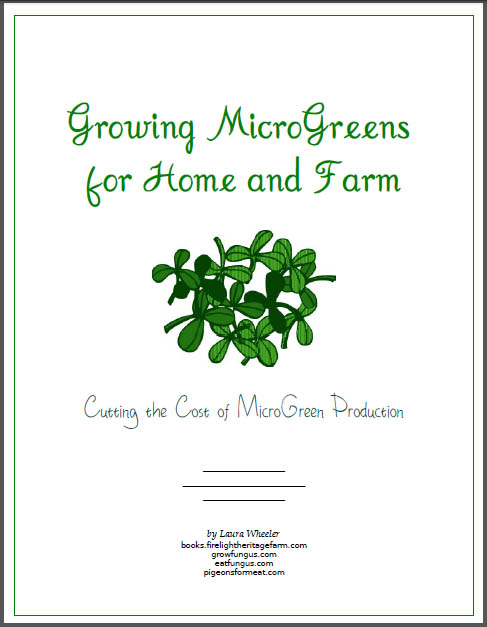 Click to Download Your Free Heritage Pickling and Culturing e-Book Now!
Click to Download Your Free Heritage Pickling and Culturing e-Book Now!
Instant Download, NO Registration Required!
Plowing Isn't Natural
Plowing and tilling are essentially the same thing. “Double digging” with a spade is also included in the category of Plowing, it is merely done by hand instead of using machinery.
A study of the history of plowing is very illuminating. Early “plows” weren't plows at all. They were sticks, used to drag a shallow furrow or hole into the dirt, just to make it easier to bury the seed. They didn't turn over the soil to any great degree. Indigenous peoples across the world still use this method (a very few peoples left who do this, they are diminishing rapidly). They really don't Plow in the way that industrialized countries think of plowing.
The Plow is NOT actually a “Traditional” tool. The Dibble is the real traditional tool. A sharp stick, sometimes with a handle on it, sometimes not. Fancy or simple, the purpose is the same. Scratch a shallow furrow, or poke a hole to receive the seed.
Somewhere along the line someone adopted the philosophy that if this much was good, more and bigger must be better, and the quest for the larger, more powerful, and deeper tilling plow was on!
There were objections to the development of plows, but those who produced them didn't really listen.
It is kind of funny, because as you read about plowing, you can see the contradictions all through the history. Here's a sampling of the “logic”.
- Plowing is supposed to help the soil hold water better, but it is also done to help the soil dry out.
- Plowing is supposed to help hold water in the soil, but in the last century, many industrial farmers have adopted no-till methods to help conserve water.
- Plowing is supposed to help reduce weeds by “burying weed seeds so they'll decompose”. We know what happens to buried weed seeds. And buried weed roots. They grow. Seeds don't decompose, because they are designed to NOT decompose unless subjected to high heat or other elements not present in cold spring garden or field soil. As one friend of ours says, “Digging some kinds of weeds just makes them mad.”. Early farmers rejected plows that plowed more deeply, because they said they'd just encourage more weeds. Eventually plow salesmen convinced them otherwise, in spite of what they already knew. The telling element of this is that it took more than a full generation for this change to take place (that is how long it takes to replace fact with illusion in the minds of a population, and for them to forget what their grandfathers knew).
- Plowing is supposed to “improve the soil” by putting organic matter from the top down into the soil. But we know from the dustbowl era, that soil loss was so dramatic from deep plowing that it caused crop losses due to soil depletion. The combination of loss of binding organic matter on the surface, and drying of the surface soil cause massive wind and water erosion.
- Plowing is supposed to reduce the cost of seed planting because farmers can use a lighter drill to mechanically plant seeds. But the fact is that farmers who do not plow use less equipment overall, and reduce the time in the fields since they have fewer tasks to complete.
- Plowing is supposed to reduce the work involved in producing crops. But if you plow, you have to disk, then you have to harrow, and then you plant. Sometimes this is done with equipment that does multiple jobs at one time. But that is a lot of work that can be replaced with far simpler methods.
- Plowing is supposed to help improve root penetration of the soil, yet plowing is known to create a layer beneath the plowed depth known as hardpan. Impacted soil caused by water not reaching that far down into the soil to keep it loose and friable (partially due to lack of earthworms that aid in this). When this happens, roots of plants cannot reach deeper into the ground to get water at lower depths. Farmers then use an even deeper cutting tool to break up the hardpan, further disrupting the natural structure of the soil.
- Plowing is supposed to reduce pest problems, yet there is no evidence that it does so without the use of pesticides in conjunction with plowing. Some pests winter over in the soil – many grubs do this. Most are not disturbed by plowing. It does, however, disturb earthworms, and completely eliminates an entire category of valuable earthworms which are responsible for breaking down organic matter on the surface of the soil. This category of earthworms builds vertical burrows deep into the soil, which helps condition the soil and avoid the formation of hardpan, and it helps the roots of plants go deeper into the soil so they are more drought tolerant. Water is also able to penetrate more deeply, which helps conserve water and make it available for use by deep rooted plants. Plowing increases the presence of soil eating earthworms, which means that many soil nutrients are used by the worms instead of by the plants, and their horizontal burrows encourage plant roots to spread out, rather than down, which further exacerbates problems caused by the absence of the vertical burrowing earthworms. There are other factors and problems created by this imbalance as well.
- Plowing is supposed to aerate the soil. It does so only temporarily, and in so doing, disrupts the natural methods of aeration that nature takes care of when the soil is not disturbed. When no-till methods are adopted, manual aeration is not necessary.
- Plowing is supposed to be suitable to “good soil conditions”. No till methods are typically only recommended by commercial sources for soils that are “not suited to deep plowing”, or where plowing may cause problems with erosion, or water issues. Now, here's the greatest contradiction of all – because deep plowing eventually turns ALL soil into poor soil! It results in a situation where organic matter must always be added to the soil, which requires more water, and more fertilizer, and increased pesticides and herbicides. This kind of farming is VERY hard on the soil, and results in losses in spite of the additions. No till methods do the opposite – they require lower amounts of inputs, and the quality and quantity increase dramatically over time when it is done correctly. So, the great irony is that Plowing will cause soil to become unsuitable for Plowing! This is precisely what occurred during the Dustbowl era in the 1930's.
Plowing sets up a situation where the problems it causes lead to the need for more interventions.
Those interventions cause a new round of problems, requiring still further interventions. It never stops.
Conversely, when plowing, tilling, and double digging are stopped, and alternate methods which leave the soil to nurture itself, and which use organic matter to improve the capacity of the soil to nurture itself, the problems are universally minimized, and almost no intervention is required. All of the promises of plowing actually backfire. But when plowing is abandoned, all of the things promised by
plowing but not realized, come to pass when plowing is NOT done.
Somehow, I think that ever more extensive plowing is the result of some kind of a male testosterone contest. If one man can plow THIS deeply, then somehow another man feels like a better gardener if he digs even deeper. There is an entire class of masochistic gardening enthusiasts who espouse a technique called “Double Digging”, where they dig a ditch and set the soil aside, then dig down another layer, then replace both layers of soil, the top layer on the bottom, and the bottom layer on the top. They INSIST that this is an ABSOLUTELY NECESSARY step, and that it must be done BY HAND, and that a tiller cannot do it! They tell you exactly the type of shovel to use, and just how to hold it, and exactly how to put your foot on it. (Seriously... I have the books!) Then they go on to tell you all the other things you must test and add to your soil in precisely measured amounts to keep your soil perfectly conditioned to grow excellent vegetables.
The other day, I read a quote from a man who insisted that to grow large onions you had to dig TWO AND A HALF FEET DEEP! Ok, so he has to what, QUINTUPLE DIG? And all to grow a vegetable with the majority of roots that grow to a depth of “not more than 5-6 CENTIMETERS”!
One of the great lightbulb moments for me many years ago was the realization that many people who write gardening instructions LOVE the whole exactness of their version of garden work. They love it so much they'll actually take on additional tasks, even ones they HATE, out of some notion that more work must necessarily make their garden BETTER than if they did less work. It is all sort of silly. They scorn at any method that saves time, believing that if it takes less work than they have deemed necessary it can't possibly work better! That way of thinking not only is kind of pompous and counterproductive, it simply does not hold up to reality.
The other thing I realized is that I did not have to produce Blue Ribbon Champion food. I just needed to produce a solid abundance of food that was capable of feeding my family. So, you can adopt work saving methods that actually do a BETTER job than the labor intensive ones, and then, on top of that, there are other things you can take shortcuts on if you are pressed for time, which may make a difference in the productivity of the garden, but NOT ENOUGH of a difference to matter in a practical day to day application. You can save HOURS of time each week, and only reduce production in the garden by a few percentage points. To me, that is worth it, because I am still getting the maximum return on my time. This is the 90/10 rule in action.
The point of that is that while there are many methods of gardening recommended, there are also many types of people recommending the methods. There are those that assume more work means more quantity and better quality, to the point of maximizing the work they deem “necessary”, and there are those who actually try different things and pay attention to the results, and study out each thing to see if it is worth doing. You want to take instruction from someone who is not just producing good results, but who is doing so with the LEAST possible amount of input, and the maximum amount of EFFICIENCY.
Many people who recommend digging deep by one means or another are doing so out of habit, and the long held belief that if so many people recommend it, that it MUST be the best way. They do not realize that people in cultures around the world produced ample food for their families for the entire year, without tilling or digging the soil, except where the individual seeds were planted. Indeed, some Native Americans planted crops this way, moved on to other areas, and then came back in the fall to harvest – they did not even pull weeds.
There are methods for growing that are not only SIMPLER, they are better. For you, for the soil, and for the plants that grow in your garden. They are not experimental methods, and they are not “new” or “trendy” methods. They are time honored ones that have been used for thousands of years.
Sometimes, going backward really does take you forward faster. Leaving the plow and all of its counterparts behind is one of those things.








